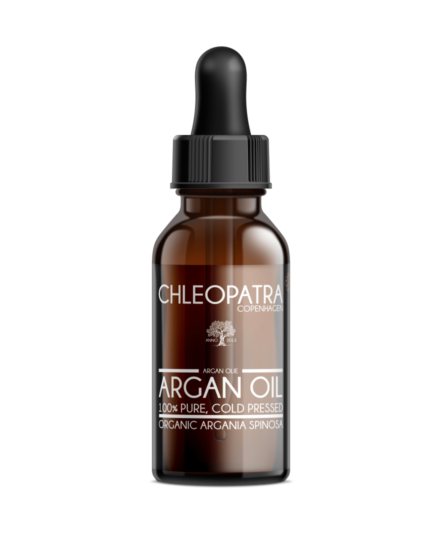ROf course, one oil can't last forever. Sometimes your oil will go rancid and smell bad, become cloudy or harbour bacteria.
That's why it's important to store your oils in the best possible way so that they last as long as possible. In this article, we'll go through the elements you need to pay special attention to in order to know if your oil has gone rancid.
[lepopup slug='optin-guides-tips']- Help, my oil smells awful - Has it gone rancid?
- My oil smells - has it gone rancid?
- My oil seems gritty - is it too old?
- My oil seems incredibly greasy - is this a sign that the oil has gone bad and rancid?
- Check the shelf life of your oil
- How to check if your oil has become rancid or too old
- Check essential oils for rancidity
- Tips to make your oils last as long as possible
- Conclusion on the topic of oil resinification
Help, my oil smells awful - Has it gone rancid?
If my oil smells or seems gritty - has it gone bad? Check here if your oil has gone rancid.Pure vegetable oils, or essential oils for that matter, all have very different lifespans. The difference between the oils and their lifespan varies from oil to oil, so the question is whether you should panic when you smell your oil or if it seems a bit gritty in consistency? In this article, we'll take a closer look at durability, storage and the risk of your oil going rancid.
How to check your oil for rancidity
- Check for odour
- Check the consistency
- Check for colour changes
Block "156904" not found
Your oil hasn't gone bad just because it smells or seems gritty
All oils have their own unique consistency and colour for that matter. Some retailers sell oils that have been refined, stripping them of some of their natural properties.
A popular refining process is to remove the oil's natural flavour and smooth out the oil's unevenness. This is used more often than you might think in cosmetics because the oil is often a little more fluid and doesn't contain impurities in the same way as an untreated oil. Oils that are not treated can be slightly lumpy, gritty or, for that matter, odourless. This is their natural consistency.
Most oils have a mild scent from their natural flavour. Some oils - including the very popular argan oil has a slightly distinctive odour. Some say it smells a bit "pikey".
If your oil is refined, it will typically not smell of anything, but if it has not been treated, it will typically smell to a greater or lesser degree of this slightly pikey odour.
Argan oil is a good example, as its natural aroma is definitely not one that is to everyone's taste. This proves that even if your oil smells, it doesn't mean that your oil has gone rancid or otherwise gone bad. In fact, most oils have a natural scent.
Most are mild. Oils that can have strong scents include pomegranate oil, Rosehip seed oil, sea buckthorn oil, coconut oil and tamanu oil.
The latter tamanu oil will typically also appear somewhat gritty in consistency. The colder the oil is, the more it will solidify and appear cloudy and gritty. That's how this oil is and it doesn't fail to do so. Once it's placed in the palm of your hand and massaged into your skin, it will no longer feel gritty.
My oil smells - has it gone rancid?
If you had a dog's nose and sensitive sense of smell, we can guarantee that all unrefined oils will definitely have a natural aromatic scent. However, it's far from all oils where you'll notice it - as a human, many oils - including; apricot kernel oil, avocado oil, almond oil, jojoba oil, passion fruit oil and evening primrose oil - has a very mild scent, whereas other oils such as; pomegranate oil, prickly pear oil, tamanu oil, sea buckthorn, Rosehip seed oil and hemp seed oil The fact that the oil smells or has an odour is not in itself a sign that your oil has gone rancid.
When smelling your oil, pay attention to whether the oil has a decidedly foul smell or a rotten aroma, in which case there may be good reason to suspect the oil. Suspicion of a rancidity process related to odour should be heightened if the oil smells metallic, bitter or soapy.
My oil seems gritty - is it too old?
Another sign that your oil may have aged is if it starts to become gritty, cloudy and full of small impurities. But again, this doesn't necessarily guarantee that the oil has gone bad, as some oils have this consistency by nature. Firstly, many oils can have what is known as sediment, which will typically appear as small impurities and appear cloudy at the bottom of the bottle.If your oil has this, you should be happy, as it shows that the oil is completely natural and full of many of its good properties.Secondly, there are oils whose natural consistency seems a little cloudy. Amongst others tamanu oils will often appear somewhat cloudy in consistency, and oils such as castor oil, pomegranate oil and to some extent hemp seed oil, may have a slightly gritty texture.
The fact that your oil seems cloudy does not mean that it has gone bad, but if the oil also smells bad, it could be a sign that the oil is too old.
My oil seems incredibly greasy - is this a sign that the oil has gone bad and rancid?
Although some oils can have a gritty texture and a slight odour without necessarily going bad, they do have one thing in common: they are rarely greasy. It may sound a bit contradictory that an oil doesn't seem greasy. The fact is, however, that the vast majority of oils should not appear greasy when they are first applied to the skin. castor oilthat seems very greasy.
If other oils, such as this one, seem very greasy in consistency, it can be a good indicator that the oil has gone rancid - especially if it also smells and seems a bit gritty.A sticky edge on the bottle is a good sign that the oil has started to go rancid and could indicate that the contents have started to deteriorate.You can also pour some oil between your fingers and check for stickiness, if it feels sticky you should throw it out (except for castor oil, which usually seems sticky).
Check the shelf life of your oil
When buying oil, you need to be aware of its shelf life. Most vegetable oils have a life expectancy of around two years, some oils last for a shorter period of time, but others can last significantly longer, for example, oils that typically only last a year are borage oil. Oils that have an incredibly long lifespan and hardly ever go rancid are jojoba oil and coconut oilYou have the option to extend the life of oils by adding natural vitamin E. Here you simply add the equivalent of 1% vitamin E to the oil, which will give the oil a natural antioxidant property.
Pay special attention to date or shelf life labelling
Most commercial products come with a shelf life labelling on the label that shows an hourglass and a number of months, meaning that the oil or contents can last for x number of months from opening the product. Often this also means that preservatives have been added to the contents to extend the shelf life. Therefore, read the ingredient list. If we are talking about a pure oil, it should only contain one ingredient, which will be the botanical name of the individual oil.Others - including CHLEOPATRA has date labelling that indicates an expected minimum lifetime for the product. The date labelling does not mean that your oil will go rancid after this date, but simply indicates the minimum expected shelf life.
These oils have a long shelf life and hardly ever go rancid
How to check if your oil has become rancid or too old
We've already gone through the different symptoms that can indicate that your oil is going through advanced rancidity. For the sake of good order, we'll list them here again:
Oil's worst enemies
Oxygen, light and heat Make sure to keep your oils completely sealed, away from light and heat. This will ensure the best conditions for your oils.
Check for rancidity
Odour Sniff your oils every now and then. Solid oils like coconut oil and jojoba oil (which is actually a wax) typically last longer than regular liquid oils. Check if the oil smells awful, foul or downright rotten. A metallic, bitter or soapy odour can also be a sign that the oil has started to go rancid.Consistency A thick oil and a sticky edge on the bottle that solidifies can be a good indicator that the oil has gone rancid. Colour If the oil changes to a darker colour, this can also be a sign. In this case, you should pay extra attention to the odour of the oil.
Check essential oils for rancidity
For essential oils almost the same tricks apply as for vegetable oils. The durability of a natural oil is governed by its chemical stability, and anything that disrupts this stability will cause the oil to start a slow but inevitable process of degradation of the oil's consistency and properties:
- Nasty odour
- Lighter and thinner consistency
- Sticky and sometimes solidified liquid on the edge of the bottle
Heat, sunlight and air can all have a detrimental effect on the chemistry of essential oils, vegetable oils, and mixtures of both such as massage oil-blends. Furthermore, the complex and varying chemistry of natural essential oils means that the rate of degradation will be different for each oil depending on the botanical species, even when kept under ideal conditions, meaning that some oils will be durable well beyond what many claim, while others may deteriorate sooner than stated. The most important weapon in the fight against a bad oil going rancid is its storage. It is therefore ultra-super important that you store oils in the best possible way.
Tips to make your oils last as long as possible
Oils become rancid when they oxidise, which is when they oxidise. Therefore, you need to keep oils away from its worst enemies: oxygen and light.
- Always keep your oils completely covered and preferably in a dark place that is not too hot. Cool storage can extend the life of your oil. If you have a wine cabinet, basement or other cold room, you can use it to store your oils: CHLEOPATRA's oils Store in a room that is always between 12-17 degrees, which is a great temperature for oils.
- If you have a bottle of oil that is half used and you won't be using it anytime soon, you can transfer the contents to a smaller bottle to minimise the oxidation of the oil. This will extend the life of the oil and minimise the risk of the oil going rancid. Every time oil is exposed to air and/or light, it undergoes oxidation and will go rancid faster, especially clean oils, natural oilsthat is untreated. Semi-refined or fully refined oils tend to last longer, but will also be poorer in many of the good natural properties of the oil.
- Most oils can be refrigerated, but you should be aware that they may solidify or become less liquid in consistency. To thaw the oil and make it ready for use, you can leave the oil at room temperature before using it.
- A final sign that your oil may have gone bad is if the colour has suddenly darkened.
Conclusion on the topic of oil resinification
As you can read, there are quite a few factors that can cause your oil to go rancid. There are roughly the same number of methods to Protect your oilFor everyday use, just make sure to keep your bottle tightly closed, keep it out of sunlight and, if possible, keep the oil dry and cool. If you experience any of the above descriptions of your oil and suspect it's rancid, you should get rid of it, or if it's brand new, you should take your oil to a specialist oil store. contact usTake good care of your oils and they will last a long time.


























Recommended natural products for skin, hair and body
Natural Raw Materials
Dried Lavender Flowers 40g
Essential Oils
Organic Orange Oil 10 ml Essential Oil - Chleopatra
Vegetable oils
Organic Argan Oil 100ml - Chleopatra
Natural Raw Materials
Dried Rose Petals 25g
Vegetable oils
Organic Apricot Kernel Oil 100ml - Chleopatra
Vegetable oils
Organic Tamanu Oil 30ml - Chleopatra
Essential Oils
Organic Rosemary Oil 10 ml Essential Oil - Chleopatra
Beard oils
Beard oil: #4 Nordik Enhance